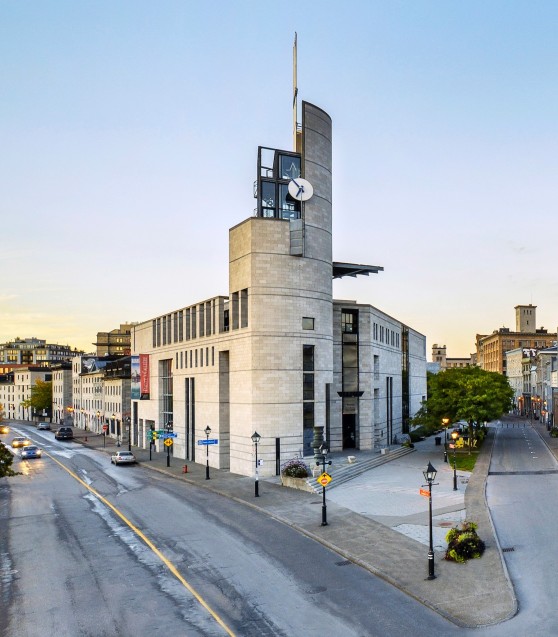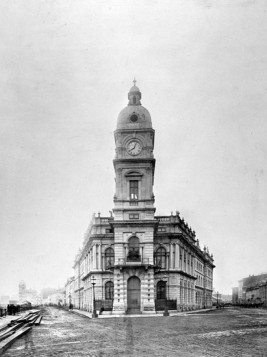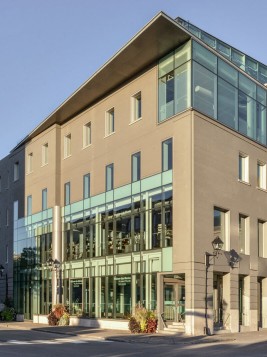Places and buildings
The Royal Insurance Building: from insurance to custom house
Designed by Liverpool-born architect John William Hopkins, the prestigious Royal Insurance Building is best known for housing the Montreal custom house between 1871 and 1917. Thanks to archaeological research and digital technology, a number of striking facets of the building's history were revealed when vestiges of the building were brought to the fore on the Pointe-à-Callière site, at the birthplace of Montréal.
Founded in Liverpool in 1845, the Royal Insurance Company came to Montréal in 1850 and soon erected a building equal to its reputation. In January 1861, the company acquired the extremity of pointe à Callière and constructed a monumental building that exceeded the height of all its neighbours and dominated the waterfront piers with its imposing front entry tower akin to a beacon at the entry to a port.
The Royal Insurance Company occupies the building until 1870 when it leaves the point to move closer to St. James St. (today St. Jacques St.) which had become the financial centre of the city. The Canadian government then buys the building to serve as its custom house, having outgrown its former building.
The custom services remain in the building until 1917 and the excise tax offices until 1921. Abandoned subsequently for several years, the building is damaged by fire in 1947 and demolished in 1951. For more than a quarter of a century, the location is a parking lot and subsequently a green space.
It was not until 1992 and the 350th Anniversary of Montréal that this historical space earned its letters of nobility, and Pointe-à-Callière showcased these vestiges of the past.



